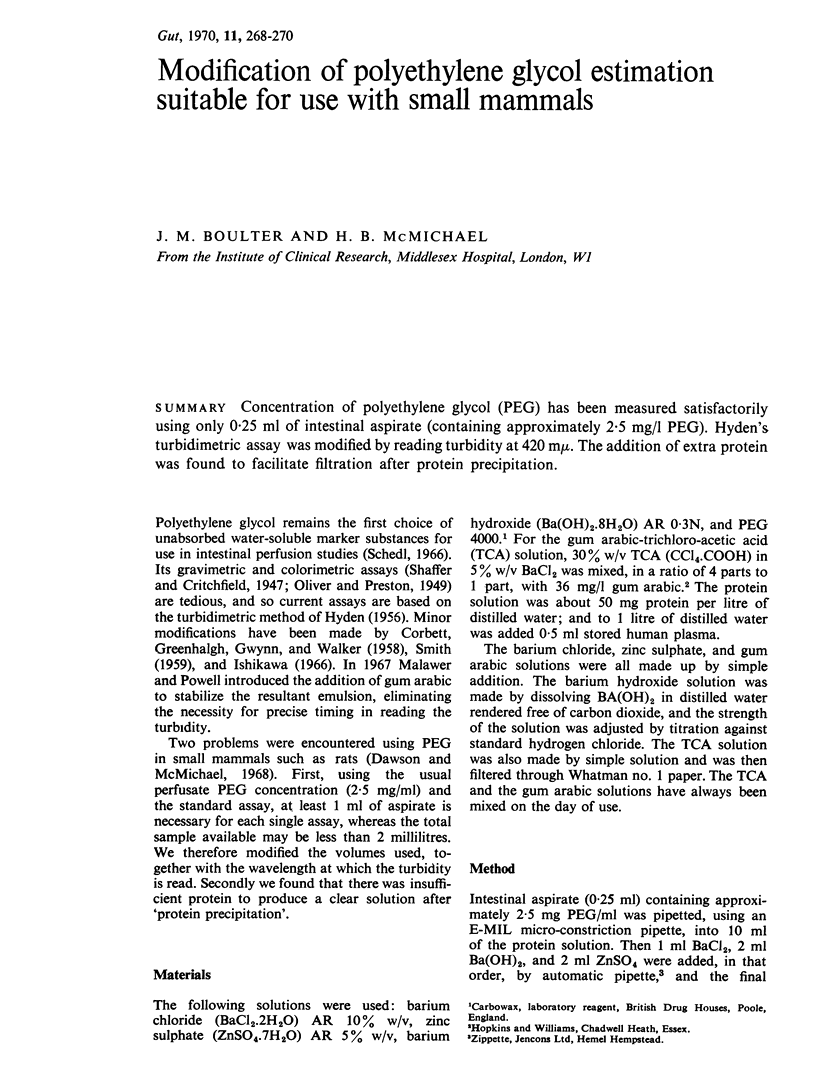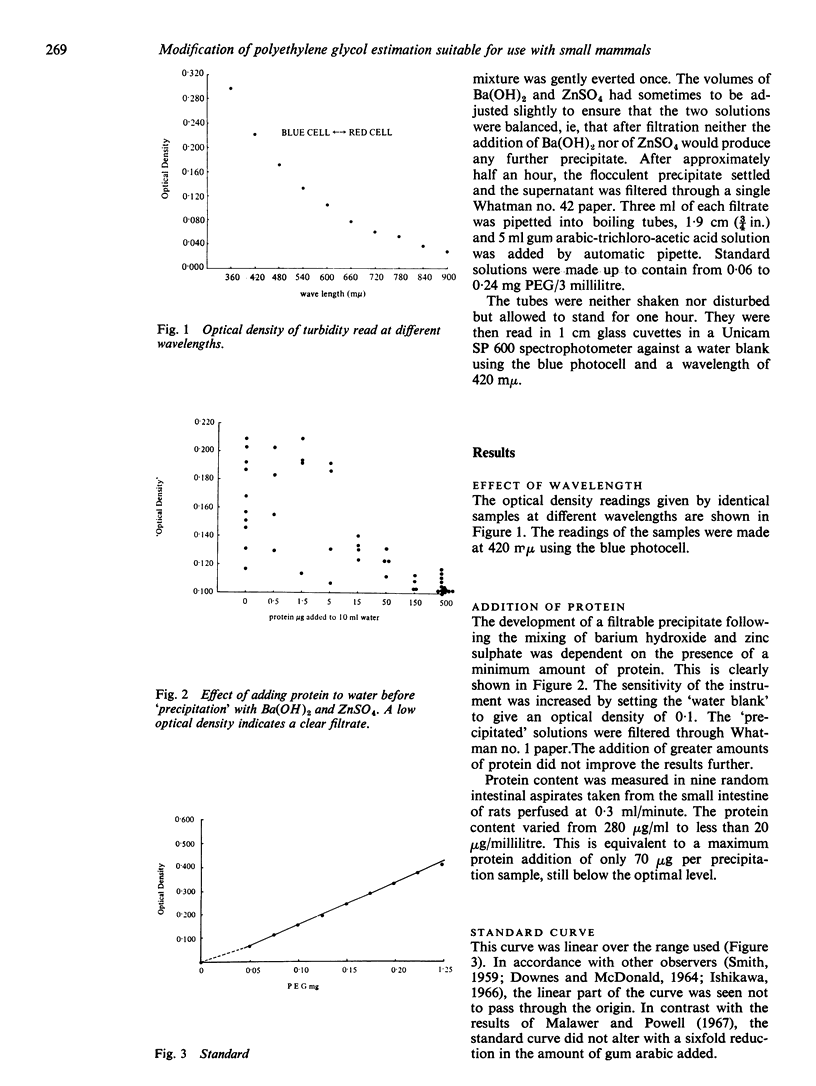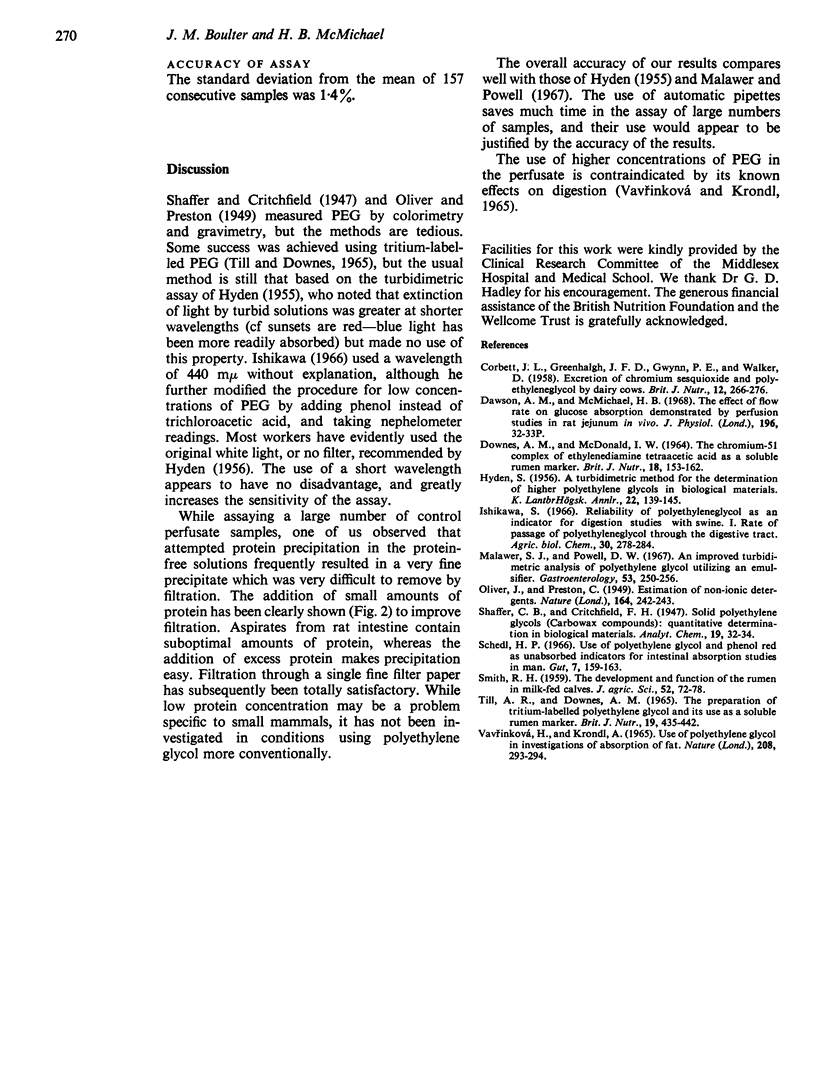Abstract
Concentration of polyethylene glycol (PEG) has been measured satisfactorily using only 0·25 ml of intestinal aspirate (containing approximately 2·5 mg/l PEG). Hyden's turbidimetric assay was modified by reading turbidity at 420 mμ. The addition of extra protein was found to facilitate filtration after protein precipitation.
Full text
PDF


Selected References
These references are in PubMed. This may not be the complete list of references from this article.
- CORBETT J. L., GREENHALGH J. F., GWYNN P. E., WALKER D. Excretion of chromium sesquioxide and polyethyleneglycol by dairy cows. Br J Nutr. 1958;12(3):266–276. doi: 10.1079/bjn19580038. [DOI] [PubMed] [Google Scholar]
- DOWNES A. M., MCDONALD I. W. THE CHROMIUM-51 COMPLEX OF ETHYLENEDIAMINE TETRAACETIC ACID AS A SOLUBLE RUMEN MARKER. Br J Nutr. 1964;18:153–162. doi: 10.1079/bjn19640015. [DOI] [PubMed] [Google Scholar]
- Schedl H. P. Use of polyethylene glycol and phenol red as unabsorbed indicators for intestinal absorption studies in man. Gut. 1966 Apr;7(2):159–163. doi: 10.1136/gut.7.2.159. [DOI] [PMC free article] [PubMed] [Google Scholar]
- Till A. R., Downes A. M. The preparation of tritium-labelled polyethylene glycol and its use as a soluble rumen marker. Br J Nutr. 1965;19(3):435–442. doi: 10.1079/bjn19650040. [DOI] [PubMed] [Google Scholar]
- Vavrinková H., Krondl A. Use of polyethylene glycol in investigations of absorption of fat. Nature. 1965 Oct 16;208(5007):293–294. doi: 10.1038/208293a0. [DOI] [PubMed] [Google Scholar]


